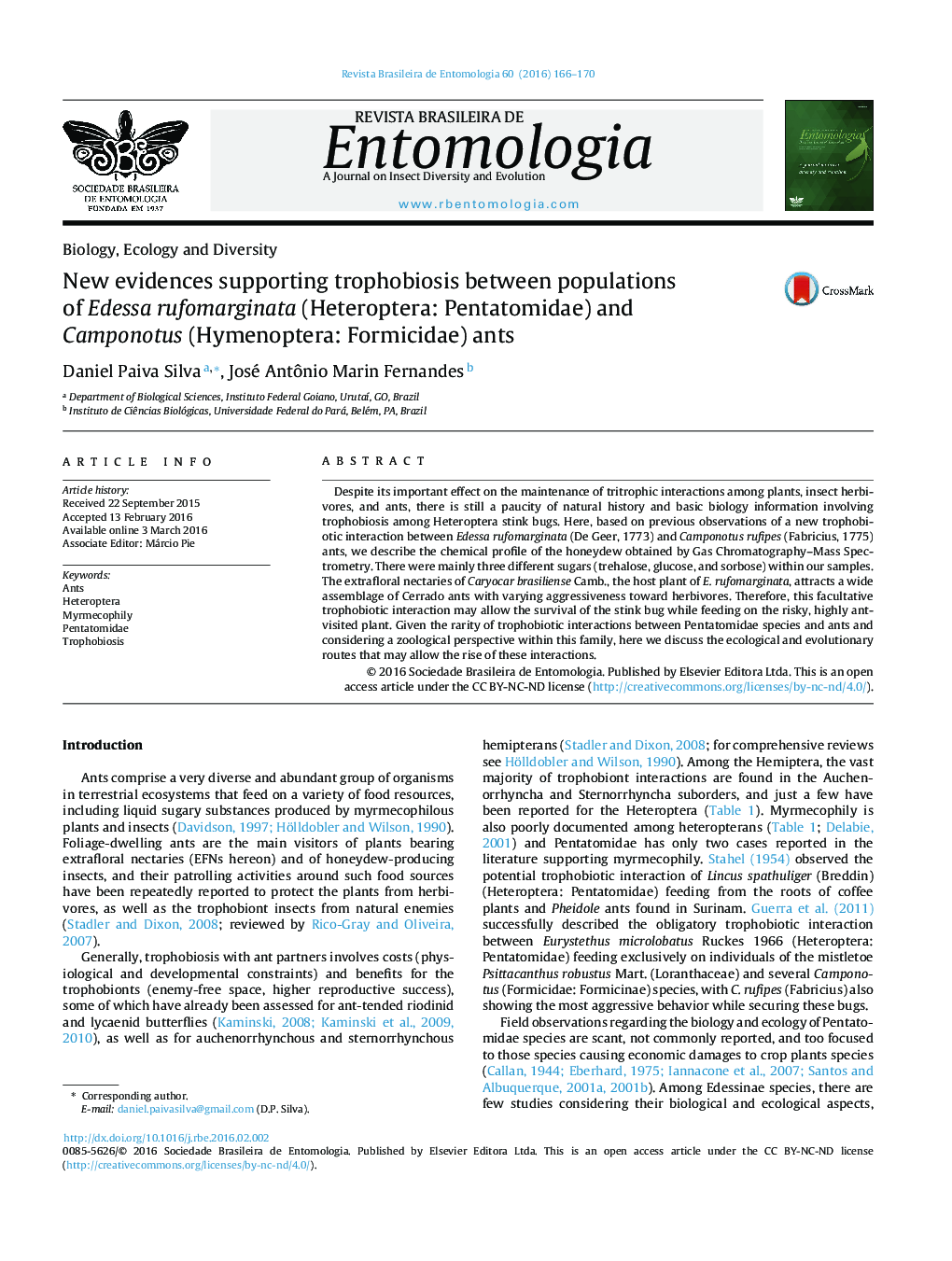| Article ID | Journal | Published Year | Pages | File Type |
|---|---|---|---|---|
| 4501595 | Revista Brasileira de Entomologia | 2016 | 5 Pages |
Despite its important effect on the maintenance of tritrophic interactions among plants, insect herbivores, and ants, there is still a paucity of natural history and basic biology information involving trophobiosis among Heteroptera stink bugs. Here, based on previous observations of a new trophobiotic interaction between Edessa rufomarginata (De Geer, 1773) and Camponotus rufipes (Fabricius, 1775) ants, we describe the chemical profile of the honeydew obtained by Gas Chromatography–Mass Spectrometry. There were mainly three different sugars (trehalose, glucose, and sorbose) within our samples. The extrafloral nectaries of Caryocar brasiliense Camb., the host plant of E. rufomarginata, attracts a wide assemblage of Cerrado ants with varying aggressiveness toward herbivores. Therefore, this facultative trophobiotic interaction may allow the survival of the stink bug while feeding on the risky, highly ant-visited plant. Given the rarity of trophobiotic interactions between Pentatomidae species and ants and considering a zoological perspective within this family, here we discuss the ecological and evolutionary routes that may allow the rise of these interactions.
